8 Winning Approaches for Persuading Others at Work

Every single day you will be persuading others at work. Improve how you persuade others, and you will save yourself more and more time and get what you want a lot more often.
When you become a manager, a good part of your day will be spent persuading others so being as good as possible at using persuasion skills at work makes your life a lot easier and less stressful.
I am taking you through 8 approaches for persuading others at work. Most of you will be using each to some extent. To improve your persuasion of others at work, try to remain consciously aware of what you are doing while persuading others and then work on improving the approaches that you are not using as much.
Focus on consciously improving one approach at a time. Get better at using the one approach you have chosen so you use it naturally without too much conscious thought. Then move on to the next one you want to focus on.
I started off being really rubbish as persuading others. Learning how to persuade and then practicing transformed my influencing and persuading skills. You can have an even quicker journey to getting good at using persuasion skills at work. Focus on one step at a time.
8 Winning Approaches for Persuading Others at Work
- Put Yourself In Their Shoes
- Answer What is in it for Them
- Show Confidence in What You Are Asking
- Choose your timing carefully
- Use fact more than opinion
- Plan Your Counter to Objections
- Introduce Scarcity and Exclusivity
- Face to Face Wins
Watch on YouTube
Listen on Podcast
So let’s start with the first approach which is
1 – Put Yourself in Their Shoes before persuading others at work
The better you know and understand the person you are persuading, the more likely you will choose the right approach or angle and use the right words to persuade them to do what you are asking.
When persuading a person you don’t know, spend time thinking about their position, the pressures they might be under, what they need to deliver in their role, what problems they might be having i.e. put yourself in their shoes as best you can.
Think about what questions you could ask to confirm the assumptions you are making. Ask those questions and listen to their response. When you have some understanding of what they are thinking and feeling towards the idea, viewpoint, or action you want to persuade them on, then you can start trying to persuade them.
Also think about them as a person. Do they like you to get straight to the point or do they prefer a chat about what happened at the weekend before they get down to business. Think through what you need to do build or maintain their trust in you.
Put yourself in their shoes when persuading your manager. Put yourself in their shoes when persuading groups. This is such an important step to convince people to agree with you.
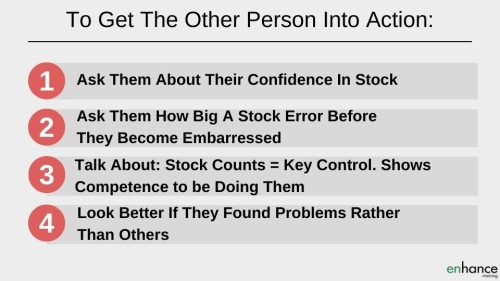
2 – Answer What is in it for Them when persuading others at work
The better you can present your request or your idea in a way that answers -what is in it for them – the more likely you will persuade them to do what you ask.
Talk to the other person in terms of how what you are asking will help them. Don’t talk about how it will help you. This is a great step in how to convince others of what you want.
For example, you want a team member responsible for stock to spend a few hours counting stock in the warehouse, so you have confidence that the stock balance on the accounting system is correct. It is not a fun task.
To get the other person into action, you might:
- Ask them about their confidence in the stock records
- Ask them how far stock would have to be out for it to get embarrassing for them
- Talk about random counts being a key control and a great thing to bring up if problems with stock ever came to light
- Talk about it looking better if they found the problems rather than other people in the business not directly responsible for stock finding problems
Hopefully you get the idea.
Think about what the other person will gain by doing what you ask or agreeing with you. This is great step in how to convince others.

3 – Show Confidence in What You Are Asking
Confidence is a very important factor when persuading others. If you are confident in what you are asking and confident in the outcomes desired, then the other person is much more likely to be confident and be persuaded by you.
If you are hesitant, unsure, or have doubts about what you are asking, the other person will pick up on this immediately and start doubting what you are asking them to do. Persuading them will be very hard at this point.
When persuading a manager or persuading your boss, make sure you are confident in what you are asking before trying to convince them to agree with you or give you permission for what you ask.
If you are unsure, go over what you are asking, do more research, gather more supporting data and facts, check alignment with wider business goals – do everything you need to so you can be very confident in what you are persuading others to do or agree to.
4 – Choose your timing carefully when persuading others at work
Timing matters as I am sure you know. The person has to be receptive to what you are asking them.
Choosing a time when they have the space and energy to listen to you is pretty key. Avoid choosing times where they are likely to be distracted or interrupted. The more important the request or the bigger the impact on them and the company, the longer you will need.
Do your best to make sure you have plenty of time to explain what you want, why you want it and to go through any questions or objections the other person may have. If you persuade them in less time that you booked in – great. If you run out of time, you may have to start from scratch to convince them next time, which will cost you additional time.
Choose your timing as carefully as possible when convincing others.
5 – Use fact more than opinion
When you have facts and data to back up your argument, you are much more likely to persuade others at work. Everyone has an opinion so just sharing what you think does not work nearly as well as when you have a logical reasoned argument with lots of evidence backing it up.
Facts and data are hard to argue against. The other party is limited to arguing against how the data or facts are being interpreted or being used which is much easier to counter.
Alignment to company strategy, objectives and goals or to the equivalent at business unit or functional level, is another way to present a course of action, idea, or request for a decision. The more aligned you are to previously agreed objectives, the less a person who has also signed up to those goals can argue against what you are hoping to persuade them to do.
Social proof is another factor you can use when persuading others. We all tend to agree with the group. If they think it is okay, then I am safe to think it is okay too.
When persuading others, use any information or opinions of others to increase the weight of your argument. Try to avoid only relying on your opinion when persuading others at work.
6 – Plan Your Counter to Objections when persuading others at work
A key point of persuading others at work is to think through all the objections a person might have and come up with an answer for them. For example, they might not have the time, or the budget or the risk appetite to do what you ask. How can you change your proposal to make it more convincing to them.
An example of counter objections – you know time will be an issue for the person you are persuading. You bring into your conversation that while doing what you ask will take them 1 hour today, it will save their teams 3 hours per week – every week – once it is implemented.
Think through likely objections and address each one to persuade others at work. You will have objections being raised or questions asked that you had not through of. Think through from the other person’s position before answering their objection or question. You are always looking to position what you want in a way that is beneficial for them.
If you don’t have a good response to an objection, say you will come back to them on that point and use the additional time to create a good response.
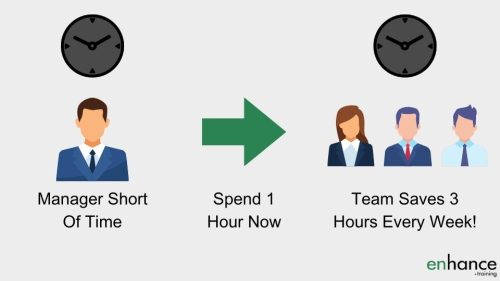
7 – Introduce Scarcity and Exclusivity when persuading others at work
We all hate missing out on something that we want. You can play on these emotions when persuading others at work. Examples of ways that you include scarcity are
- Reminding the person that you or your team can only do so much in a day
- Say you only have time in the next two days and after that you are maxed out
- Say that input and amends have to be done today before a decision is taken
Examples of how you can include exclusivity include:
- Say that you have come to the person first but will have to go to other managers if they can’t commit now
- Say they get the output or report first and have an extra hour to prepare vs others
- Say to your customer that this offer is only available to the first 10 people who sign up
Using scarcity and exclusivity makes the person more likely to agree with want you want them to do and do it sooner.
Do be careful not to overdo using scarcity or exclusivity. You don’t want to come across as trying to manipulate especially as you will need to work with colleagues going forward.
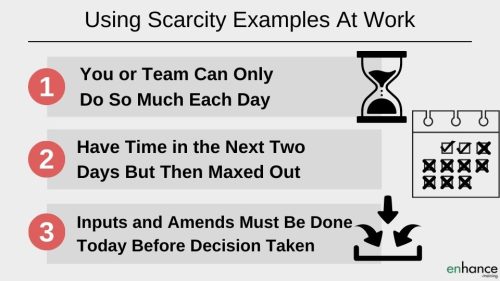
8 – Face to Face Wins
Persuading others is much easier face to face than over the phone. You have more feedback when standing face to face through all the non-verbal communication the other person is providing you. This gives you more opportunity to change your approach and/or message and thus become more persuasive. The non-verbal communication is more than 50% of how we communicate when face to face.
When you need to persuade others at work, get up from your desk and walk round to see them or book in a meeting.
Video calling gives you, in my view, around 80% of what you get when face to face so this is the next best communication medium if you are not able to physically meet.
Next is the phone. You loose more than 50% of the communication you have when you can see the other person. You still have the voice, the tone, the pace, the pauses as well as the words being said.
Don’t use email, chat or other text based communication to try to persuade others at work. You loose over 90% of the communication information available compared to the other methods mentioned.
Text based communication is good for sending information but very poor when persuading others.
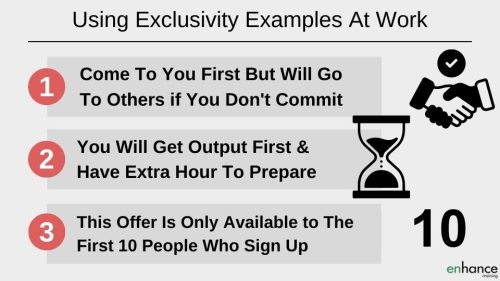
In summary
Persuading others at work is very much an art. Building trust and being competent at what you do are very useful building blocks to persuading others at work on a regular basis.
Use each of the approaches we have covered to improve how you go about persuading others. Focus on improving one and them move on to the next. You absolutely will get good at convincing others with practice.
As a reminder, we have covered:
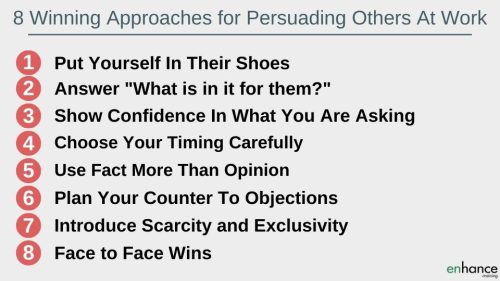
Learning to be good at persuading others at work does take work. Know what to do. You will get loads of opportunities to practice. Stay as conscious as possible during your conversations and when you are using your persuasion skills.
Keep focused on how the other person responds to you. Keep your awareness high of their body language and all the other non-verbal clues they provide.
You can absolutely become great a persuading other people. Put these approaches into practice and practice. You will be amazed at how quickly you can improve.






